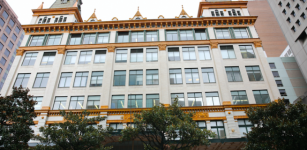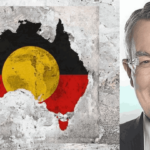Racial Imbalance in the NSW Judiciary

On April 26 this year, Victorian attorney-general Martin Pakula announced the appointment of Urfa Masood to the Magistrates’ Court of Victoria.
Ms Masood, who is of Sri Lankan background, began practising as a solicitor with the Victorian Aboriginal Legal Service in 2003. She was admitted to the Bar in November 2004 and continued to practise criminal law, as well as family law.
The reason Ms Masood’s appointment made headlines was that she’s the first female Muslim magistrate to be appointed to office in Victoria. And what’s most significant about her appointment is her Islamic faith, rather than her gender.
Victorian female judicial officials
Women have been a part of the Victorian judiciary for decades now, and so they should be.
In 1983, the first female Victorian judicial officer, Francine McNiff, was appointed to the Children’s Court. Although, the early 80s for far too late for women to join judicial ranks.
In March last year, the Victorian state government passed new rules imposing a quota system so that at least half of all new judicial officials and government board members must be women.
Victorian premier Daniel Andrews said the measures were to address the situation where female government board members had dropped from 40 percent to around 35 percent in recent years.
Figures show that in 2011, only 23.4 percent of judicial officials were women. Forty-three percent of High Court Justices were female, while only 13.6 percent of judges in the District Court of South Australia were women.
The figures for NSW female judicial officers
Unlike Victoria, New South Wales does not have a quota system.
We contacted the Judicial Commission of NSW (JCNSW) to find out whether they keep records on the proportion of female magistrates and judges in the state – and they do indeed.
The JCNSW 2014-15 Annual Report says that in 1987, only 5 percent of judicial officers were female, while in 2007 it had risen to 27 percent. In 2015, 31.5 percent of the 326 judicial officers state-wide were women.
No account is being taken of racial disparity in the NSW judiciary
We asked the JCNSW if we could obtain figures of how many Muslim NSW magistrates and judges there are, along with the number of judicial officers in the state who come from non-Anglo Australian backgrounds, and the data on judicial officers’ religions.
We were advised they do not have any such data, and could not therefore comment on the matter any further.
This absence of data reflects the lack of importance attributed by the Commission to ensuring the judiciary fairly reflects the community, and is in stark contrast to the treatment of gender in recent years.
It is certainly at odds with the way a number of other developed countries deal with the situation, including the UK and US where affirmative action programs seek to address imbalances in both gender and race. Data is essential to properly assess and identify a problem, and to take steps towards reform.
But the Commission seems to view racial and religious imbalance as a non-issue.
Ugur Nedim is an accredited criminal law specialist and the principal at Sydney Criminal Lawyers®. He says he’s personally acquainted with many experienced and highly capable lawyers who are Muslim or from Middle Eastern backgrounds, and that there are perhaps hundreds in the state. “But in my 18 years as a criminal defence lawyer, and 24 years in the profession, I’ve rarely if ever come across a magistrate or judge who I could say is likely to be from a Middle Eastern background or Muslim” he said.
The reasons behind this lack of representation
But in 2016, can we attribute this racial disparity to prejudice?
The 2013 Mapping Social Cohesion survey by the Scanlon Foundation found that 19 percent of Australians were discriminated against because of their religious beliefs, ethnicity or the colour of their skin. This was up from 12 percent the year prior. And although last year’s survey found the figure had dropped to 15 percent, it’s still high above the 2007 figure of 9 percent.
Experts have attributed the rise to economic uncertainty, the growing numbers of asylum seekers, fears of terrorism and the debate over weakening the Racial Discrimination Act that occurred recently.
A 2013 Edith Cowan University report titled Recruitment Discrimination against Middle Eastern People in Western Australia found that Middle Eastern citizens were receiving biased treatment when applying for jobs in the state. This was apparent when tested against aged Anglo Australian applicants.
“The current study not only corroborates trends found in qualitative research examining hiring bias of employers against people of Middle Eastern descent,” wrote Tiny Pinkerton, author of the report.
“But also provides a compelling indicator of the prevailing negative attitude towards this population.”
Prejudices against women are also seen as a reason why gender disparity still exists in the Australian judicial system. Ainslie van Onselen is a lawyer and former elected representative of the WA Law Society.
In 2011, she wrote in the Australian that “sexist briefing practices (whether conscious or unconscious), Bar culture, quality of briefs, and inherent bias must all take their share of the blame,” for the lack of representation of women amongst Australian judicial officers.
Time for change
So given the current racial climate in Australia and the bias that exists already in the judicial system, it’s highly likely that prejudices are behind the lack of representation of Middle Eastern and Muslim Australians amongst NSW’s magistrates and judges.
But should a quota system be brought in to address such racial disparity or would it be more suitable that the government implement an affirmative action plan to address this situation?
Either way, many believe there is a need to implement some sort of policy that would provide a better representation of the general population’s make up amongst the state’s magistrates and judges.
Receive all of our articles weekly
Author

Paul Gregoire






